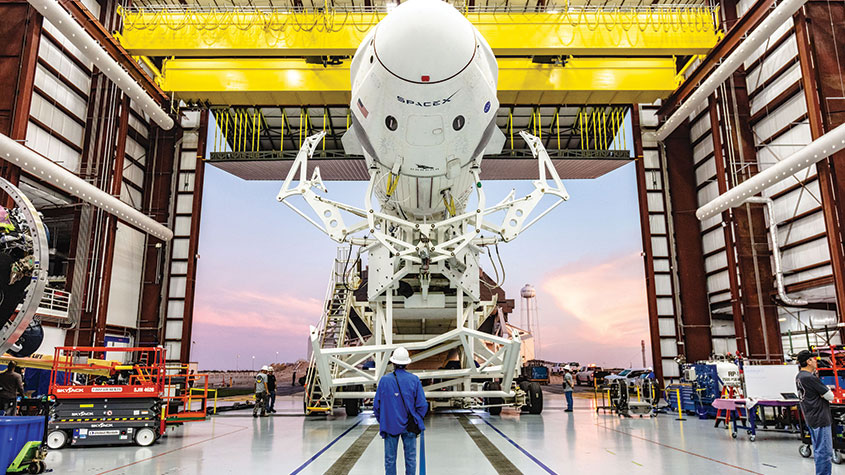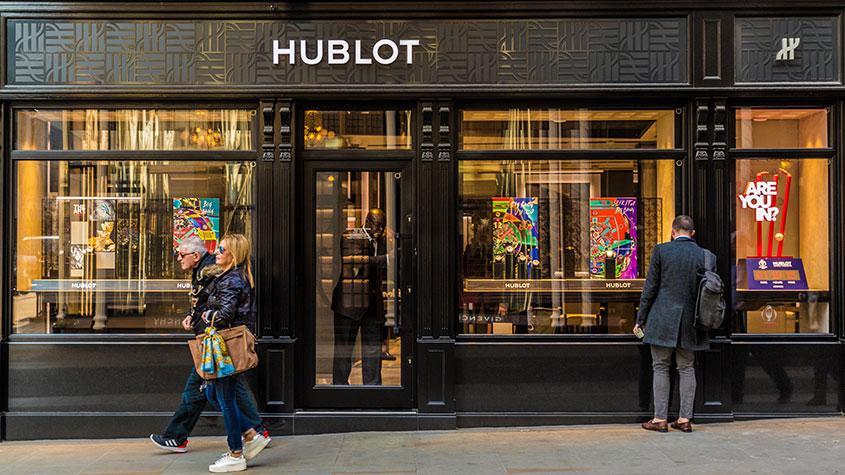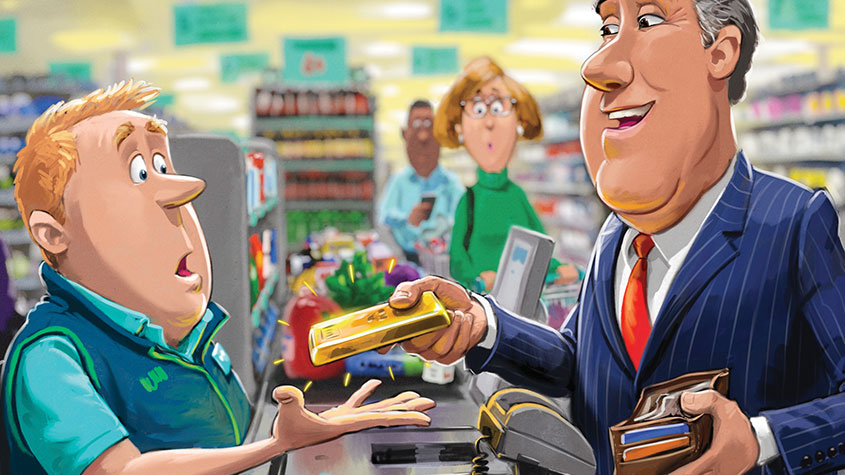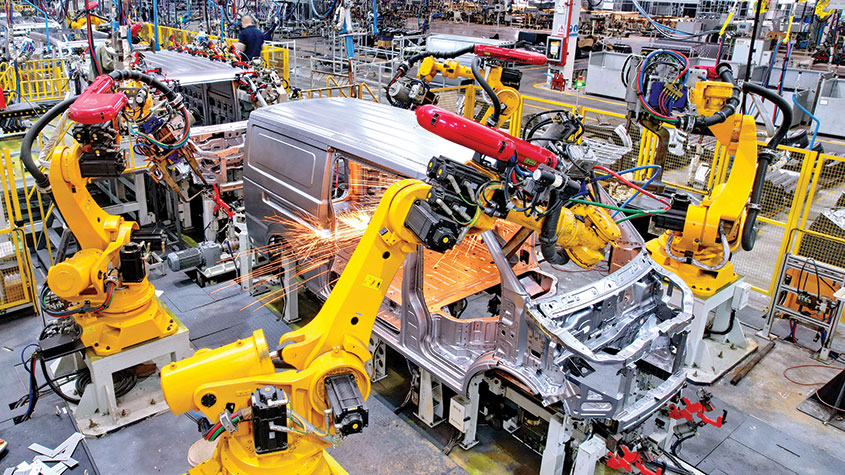Pampered pets promise strong and steady long-term growth
Our growing tendency to treat our pets as family members is great news for animal food, medicine and even furniture makers. The petcare sector also looks immune to recession. Chris Carter reports.


"No commonplace mousers have such well-cut trousers", wrote TS Eliot of the "remarkably fat" Bustopher Jones in his Old Possum poems. But these days commonplace mousers, pedigree cats and a wide array of other animals have their own outfits. In Japan, dogs are "often trussed up in a T-shirt and jeans or the latest fashions from expensive boutiques", says The Economist. "It is common for a parent taking a baby for a stroll to exchange a look of solidarity with another pram-pusher, only to glance down and realise the other's contains a furry friend." Welcome to the world of "fur babies". It isn't limited to Japan.
Lavishing cash on cats, dogs and rabbits
"Our research shows that millennials are particularly devoted to their furry companions," says Chana Baram of market research group Mintel. "As the age of having children increases... some young people are opting to first get a pet and treat them as a family member." That doesn't come cheap. Last year, Britons spent £1.7bn on petcare products and services such as toys and visits to the vet. That figure is projected to grow to £2.1bn by 2023.
What's more, the sector appears largely impervious to an economic downturn: 51% of consumers said they would sooner take a hit before spending less on their pets. Pet charity PDSA has found 88% of us underestimate how much we spend each month on our dogs, cats and rabbits around £70. The vast majority of cat owners 95% incorrectly thought that they spent less than the actual average figure of £12,000 over a cat's life. Larger dogs can cost up to £17,000. It's a similar story in the US. In 2017, Americans spent a total of $69.5bn on their pets, according to the American Pet Products Association. It estimated that the figure for 2018 will be $72.1bn. Spending has steadily risen year on year. A quarter of a century ago, it was just $17bn.
MoneyWeek
Subscribe to MoneyWeek today and get your first six magazine issues absolutely FREE

Sign up to Money Morning
Don't miss the latest investment and personal finances news, market analysis, plus money-saving tips with our free twice-daily newsletter
Don't miss the latest investment and personal finances news, market analysis, plus money-saving tips with our free twice-daily newsletter
The rise in spending on our furry friends is showing no signs of abating. When we last looked at the pet economy a little over two years ago, we noted pet cloning was becoming more popular and less expensive (relatively speaking it still costs around $50,000 to clone a dog in the US, as Barbra Streisand did following the death of her Coton de Tulear, Samantha, in 2017). We saw also how manufacturers were marketing pricey toys and even colognes including one called Sexy Beast for a mere £45, to dog owners. Luxury pet hotels and spas have also been springing up.
A pet-feeding frenzy
The most eye-catching development since early 2017 has been a frenzy of activity in the pet-food segment. American premium pet food maker Blue Buffalo was the first stock we eyed up back then. It was one of the few pure plays in the market, but on a price/earnings (p/e) ratio of 33, it was a bit rich for our taste but not for General Mills, as it turned out. The US biscuit-and-cereals giant gobbled up Blue Buffalo for $8bn last February.It was a "steep" price to pay, says Bloomberg's Craig Giammona, but pet food offered the tantalising prospect of stable earnings (animals are apparently less fussy eaters than fad-obsessed humans, although try telling my cat that). It also offered a big presence in a market that has grown by a third in five years in America. The downside, at least as far as investors are concerned, is that all this consolidation means there are few "pure plays" in pet food.
"Welcome to the world of fur babies'. A cologne for dogs called Sexy Beast costs amere £45"
In April, The JM Smucker Company, the maker of the "jelly" component in the archetypal American peanut butter and jelly sandwich, announced it also had an appetite for pet food. It paid $1.9bn for Ainsworth Pet Nutrition. Meanwhile, Mars has long been a big player on the pet food scene for some time now. The privately held company better known for confectionery also makes pet food brands Whiskas and Pedigree. Around half of its earnings come from its pet-care division, which employs 60% of its workforce.
But Mars isn't stopping there. Its CEO, Grant Reid, told Bloomberg Businessweek last month Mars wants to double the size of its overall business over the next decade by expanding its pet division. The company had already snapped up a chain of animal hospitals for $9.1bn in 2017. Swiss giant Nestl, which owns the Purina, Go Cat, Felix and Bakers brands, is also keen to expand its pet food division, with Canadian pet food maker Champion a possible appetising target, according to Carol Ryan in The Wall Street Journal.
A British success story
While the big players dominate the scene, fleet-footed start-ups can still thrive as the overall market expands. One homegrown success story is Lily's Kitchen. Henrietta Morrison started the business in 2008 after her border terrier, Lily, fell ill and went off her food. Morrison began whipping up tasty treats in her north London kitchen, using fresh lamb, lentils and vegetables. Lo and behold, Lily recovered.
Morrison asked herself "Why doesn't pet food smell delicious and have human-grade ingredients?", she told the BBC last March. "I know it sounds crazy, but I had this sense of urgency I thought I had to set up a pet food company because thousands of people like me are unwittingly feeding their pets food that is making them ill." Mirroring the Hoxton "hipster" trend of the last ten years or so, Lily's Kitchen is the latest example of a company benefiting from owners increasingly seeing their pets as friends and family and worthy of spoiling rotten.
Lily's Kitchen has been expanding aggressively. The brand's cottage pie with potato and carrots for dogs, and hunter's hotpot for cats, is now sold in Italy, the Netherlands and Dubai. Sales have soared by 32% in the year to the end of March 2018, even if expansion has doubled pre-tax losses to £5.3m. "The plan is to grow as fast as we can and catch up with the financials later", says CEO David Milner. Many risk-averse investors would find that statement hard to stomach, but it encapsulates the buzz and burgeoning demand in the pet-food market.
Cleaning canine choppers
Animal health has also become an increasingly hot topic. February, for instance, is Pet Dental Health Month. Lily's Kitchen has started selling "Woofbrush" dental chews for dogs. Nevertheless, 80% of dogs, and 70% of cats over the age of three suffer from poor oral health, notes Pete Wedderburn in The Daily Telegraph. So, there's still room for improvement, not least because research points to a link between the bacteria that develops from decaying teeth and problems with the heart, kidneys and perhaps even the liver.It's a similar story with obesity. The British Veterinary Association and British Veterinary Nurse Association estimate 46% of dogs, 34% of cats, and 30% of pet rabbits in Britain are carrying too many pounds. As with humans all this extra weight leads to all sorts of health problems. That's why PDSA,the animal charity, wants the owners of Britain's podgiest pets to enrol in its nationwide slimming competition called Pet Fit Club. Over the last 14 years, it has helped 137 animals (85 dogs, 42 cats, eight rabbits and two rats) lose a combined 75 stone equivalent to 1,190 tins of dog food, according to the charity's website.
"The veterinary drugs market will be worth $27bn by 2024, up from $17bn in 2015"
The alternative for pet owners is crippling vets' bills. The average pet insurance claim is around £750 in Britain, according to the Money Advice Service. But treating poorly pets can quickly run into the thousands. Chemotherapy for cats, for example, can cost £5,000. In September, the BBC reported that a couple in Cheshire had spent £12,000 on a pioneering double-bypass heart operation for their pet labrador a procedure that had never been carried out on a dog.
It is this willingness to dig deep, particularly in America, that "has created a flourishing pet pharmaceutical industry, attracting Merck, Eli Lilly and Bayer", says David Millward in The Daily Telegraph. The veterinary drugs market will be worth $26.7bn by 2024, a sharp increase on 2015's figure of $17.2bn, according to an estimate last year by Transparency Market Research. There is now even a nascent market for bespoke pet furniture (see below). Given all this fuss over furry animals, what should investors be eyeing up now?
Where to put your money
The rampant consolidation in pet food means there are no "pure plays" in that area, but there are still several in the pharmaceuticals sub-sector. Indeed, these have been the best performers of the stocks we looked at a couple of years ago. We thought they looked promising thanks to the rapid advances in veterinary medicine, even if they weren't exactly cheap. Investors have piled in. Shares in Zoetis (NYSE: ZTS) have risen by around 62% since January 2017, Idexx Laboratories (Nasdaq: IDXX) by 77% and London-listed Dechra (LSE: DPH) has seen its share price jump by about 78%. Now these stocks are priced for perfection. Dechra, in particular, is on an eye-watering p/e of 61.We wouldn't top up our holdings until they miss an earnings forecast or two or the overall market swoons.
The best bets: vets, retailers and funds
CVS Group (LSE: CVSG) is a veterinary services provider that has disappointed over the last two years, after struggling to branch out into catering for farm animals and horses. The shares have fallen by 60% in two years, and they lost a quarter at the end of last month following a profit warning. But the fear may be overdone. Group sales rose by 24% in the half year to December, and the shares are currently trading on a temping forward p/e of ten. As for our speculative punt on the small-cap Japan Animal Referral Medical Center (Tokyo: 6039), the share price has risen by 44%, yet remains extremely volatile.When it comes to retailers, Pets At Home (LSE: PETS) takes the canny approach of hosting vets in its pet stores, increasing the potential for cross-sales when Tiddles is brought in for his annual check-up. The overall retail malaise has battered the stock, but trading looks solid. Sales in the 12 weeks to 4 January rose by 6.3% year-on-year.
"Concern over veterinary chain CVS Group looks overdone"
Finally, two pet-sector focused funds were launched in the US last year.ProShares Pet Care (US: PAWZ) is an exchange-traded fund following the wider pet sector. Idexx Laboratories, Dechra and PetMed Express, an American online retailer that has struggled recently, make up almost a third of its holdings.
The other fund is the actively managed Gabelli Pet Parents' NextShares (Nasdaq: PETZC). Its biggest holding at 7.7% is Central Garden & Pet, which offers garden supplies in addition to brands covering everything from dog treats and flea treatments for cats to care products for horses. After that, pet pharmas Idexx Laboratories, Zoetis and Dechra jointly comprise 15% of the fund. German-based online pet supplies retailer Zooplus and Greencross Limited, which operates pet shops and veterinary practices across Australia and New Zealand, are also significant holdings. The fund charges a 1% management fee.
The latest craze: bespoke pet furniture

Toss out the old cushions, shoes or chewtoys. Get rid of that tatty blanket. In today's pet-friendly society, if you welcome an animal into your house, then its new abode should reflect the esteem in which it is held.
That's the ethos behind the modern concept of design for pets. After all, what does keeping an animal in a cage say about human-animal relationships, asks Tom Wainwright in the introduction to his book Pet-tecture: Design for Pets. On page after page, you will find examples of stylish doggy dens and kitty scratching posts.
It's a relatively recent trend and a potentially lucrative one. In the same way Robert Adam in the 18th century, Le Corbusier in the 20th and Zaha Hadid in 21st turned their attention to designing a chair at least once in their careers, major designers today are inventing stylish, environmental and comfortable spaces for animals, writes Wainwright. Clearly there were "elaborate Victorian birdcages back in the day", Wainwright tells me. "But talking about actual new designs I would say it was really a 21st-century thing."
The shift towards sustainable consumption is reinforcing this trend. Environmental concerns and "the huge rise in vegan culture" are encouraging people to re-evaluate how they share their homes with their pets. "So, a lot of brands now will put eco-friendly stamps on the front of their products," he says. There is this "growing consciousness of being more caring for the environment and the beings that we share our planet with". This is reflected in so many of the designs "where people are using either recycled wood, recycled metal, scrap metal and also the staggering amount of cardboard mainly for cats, because they love to rip into things", he says.
Of course, young people and families are hardly flush with cash these days, but stylish doesn't have to mean expensive. When Wainwright started researching the book, he was expecting to find designs that wouldn't look out of place in a television star's opulent abode.
"I was shocked how that wasn't really what I found", he says. "So many people had gone to their local pet shop for something for their cat or dog or bird, or even bunny, and they had decided that there was nothing that really fits in with how I want my house to look and there's nothing that is genuinely comfortable for my pet'. So they set about making it themselves," he explains. "I think the designs are always tailored around the pet." You do still see in pet shop windows "generic, quite rough foam mats, which have a dog bone shape on it", says Wainwright. But "I think in the future, people will start shopping for their pets like they do for their children at John Lewis or wherever".
That's true not just of Britain, but of many parts of Asia, too. There, much like here, pets are considered part of the family. Designs from South Korea, for example, draw on the idea of the family home consisting of parents, children, and dogs in particular.
"The number of animals in Asia is just phenomenal." Come hell, high water, or a nasty economic downturn, Wainwright doesn't see that ever changing anywhere. "I imagine that even during financial struggles, I couldn't see pets not being around." Pets are here to stay.
Get the latest financial news, insights and expert analysis from our award-winning MoneyWeek team, to help you understand what really matters when it comes to your finances.

-
 Polar Capital: a cheap, leveraged play on technology
Polar Capital: a cheap, leveraged play on technologyPolar Capital has carved out a niche in fund management and is reaping the benefits
-
 Vaccines inject billions into Big Pharma – how to profit
Vaccines inject billions into Big Pharma – how to profitThe vaccines subsector received a big fillip from Covid, but its potential extends far beyond combating pandemics. Here's what it means for investors
-
 Invest in space: the final frontier for investors
Invest in space: the final frontier for investorsCover Story Matthew Partridge takes a look at how to invest in space, and explores the top stocks to buy to build exposure to this rapidly expanding sector.
-
 Invest in Brazil as the country gets set for growth
Invest in Brazil as the country gets set for growthCover Story It’s time to invest in Brazil as the economic powerhouse looks set to profit from the two key trends of the next 20 years: the global energy transition and population growth, says James McKeigue.
-
 5 of the world’s best stocks
5 of the world’s best stocksCover Story Here are five of the world’s best stocks according to Rupert Hargreaves. He believes all of these businesses have unique advantages that will help them grow.
-
 The best British tech stocks from a thriving sector
The best British tech stocks from a thriving sectorCover Story Move over, Silicon Valley. Over the past two decades the UK has become one of the main global hubs for tech start-ups. Matthew Partridge explains why, and highlights the most promising investments.
-
 Could gold be the basis for a new global currency?
Could gold be the basis for a new global currency?Cover Story Gold has always been the most reliable form of money. Now collaboration between China and Russia could lead to a new gold-backed means of exchange – giving prices a big boost, says Dominic Frisby
-
 How to invest in videogames – a Great British success story
How to invest in videogames – a Great British success storyCover Story The pandemic gave the videogame sector a big boost, and that strong growth will endure. Bruce Packard provides an overview of the global outlook and assesses the four key UK-listed gaming firms.
-
 How to invest in smart factories as the “fourth industrial revolution” arrives
How to invest in smart factories as the “fourth industrial revolution” arrivesCover Story Exciting new technologies and trends are coming together to change the face of manufacturing. Matthew Partridge looks at the companies that will drive the fourth industrial revolution.
-
 Why now is a good time to buy diamond miners
Why now is a good time to buy diamond minersCover Story Demand for the gems is set to outstrip supply, making it a good time to buy miners, says David J. Stevenson.